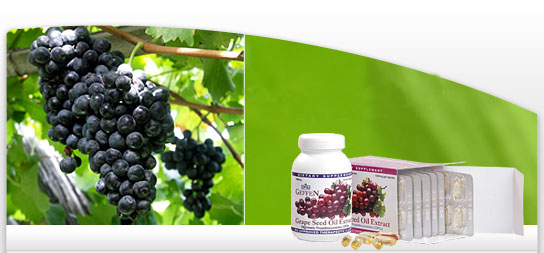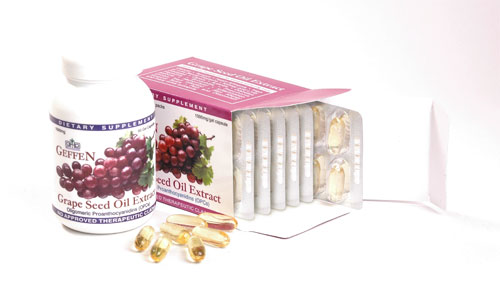
|
|
 Definition
Definition
Grape seed oil extract is a naturally occurring plant substance that contains a concentrated source of antioxidant nutrients known as oligomeric proanthocyanidins. These antioxidants can help protect against the effects of internal and external stresses. Scientists have demonstrated that oligomeric proanthocyanidins, more commonly known as OPCs, are more powerful antioxidants than vitamins C, E and beta-carotene. Active Ingredient Oligomeric proanthocyanidins, more commonly known as OPCs, are the active ingredients of grape seed oil extract. To learn more about the chemical structure and nature of oligomeric proanthocyanidins, you can download this e-book in pdf format. Your computer must have
Acrobat reader to open this e-book.
Oligomeric proanthocyanidins or OPCs are a class of flavonoid complexes found in grape seeds and skin, that act as antioxidants (free radical scavengers) in the human body. WARNING: Because of the demand for OPCs and because of greedy companies aiming for huge profits, unreliable extracts are now proliferating in the market. It is your duty to learn the difference between what is FAKE and what is real OPC. Click here to learn more. What is the history of grape seed extract? Scientists first became interested in grape seed extract in the latter part of the 20th Century due to an outgrowth of research about the "French Paradox." The French Paradox shows a low incidence of heart disease (nearly half that of the United States) among the French despite a high incidence of known dietary and other contributing factors to heart disease. Some scientists believe that the secret of the French Paradox is red wine, which is an integral part of the French diet. Further research suggests that OPCs present in red wine can promote cardiovascular health. Grape seeds have been found to be the richest source of OPCs. Summary of Benefits:
Features of Oligomeric Proanthocyanidins:
How does the location of grapes affect the quality of grape seed extract? The location where grapes are grown plays a major role in the content of OPCs. Temperature and humidity significantly affect the antioxidant content in grape samples. For example, French and Californian red grapes are rich in OPCs. Vitis vinifera (wine grapes) also are known to contain more antioxidants than other grape types. Does grape seed extract require a certain color or type of grape? Wine grape seeds are naturally high in antioxidants. Red wine is higher in antioxidant content than white wine because red wine is fermented in the seeds – the antioxidants leach from the seeds into the wine. The potency of seeds is maintained by rapid processing to keep them from becoming fermented.
|
|
|